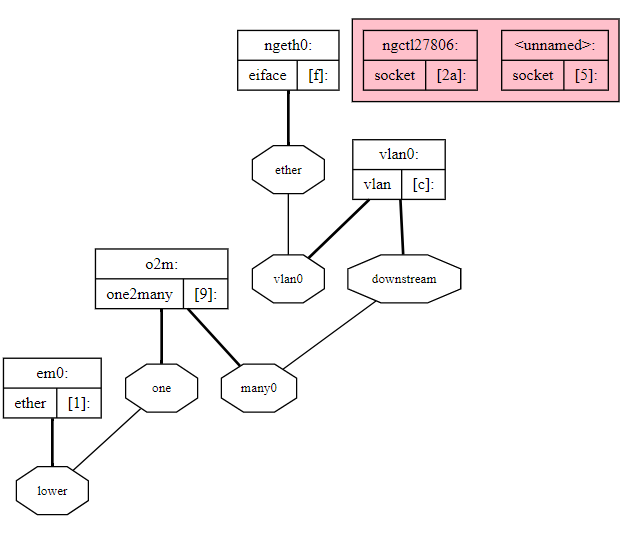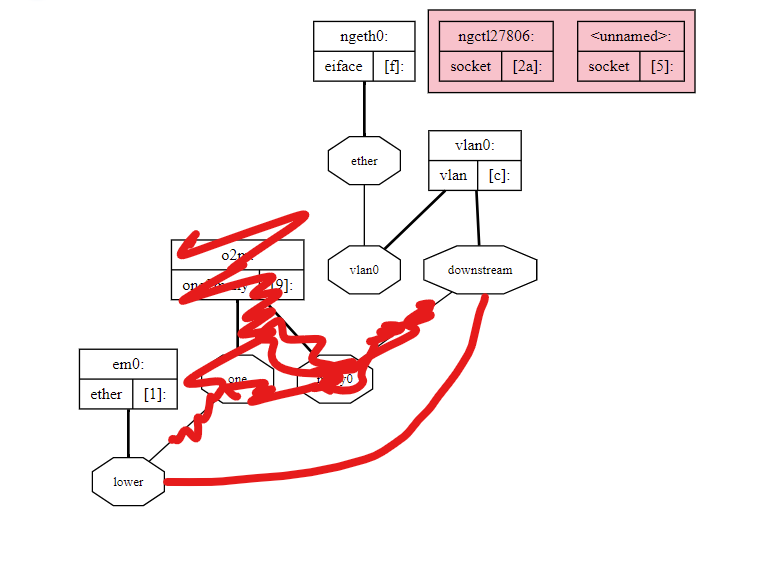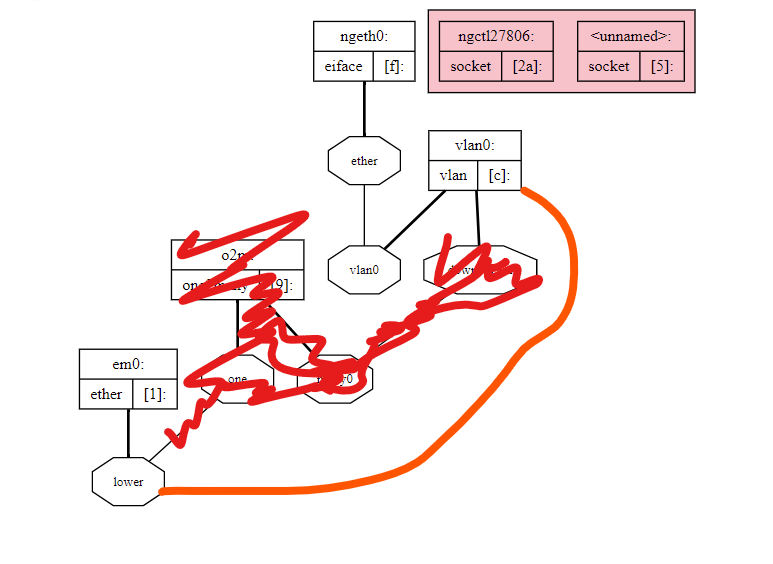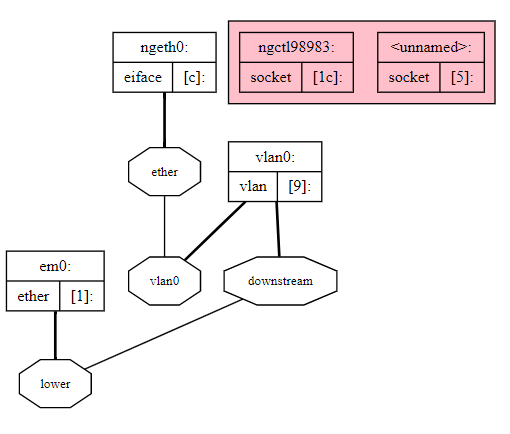How to get pfSense WAN to accept VLAN 0
-
No, I haven't used any Netgear equipment.
-
Consider running pfsense in a VM and tag WAN as VLAN0 on the vswitch.
Then it should be working of the box directly from the modem
-
@cool_corona said in How to get pfSense WAN to accept VLAN 0:
Consider running pfsense in a VM and tag WAN as VLAN0 on the vswitch.
Then it should be working of the box directly from the modem
Not sure what the overhead of VMware will do to the performance on my unit. I have a i5-4570TE with 4gb of ram. I would like to run Snort and still get my 1gb symmetrical
-
@stephenw10 - Started digging into Netgraph again.... I found in another post that in 2.4.5-RELEASE-p1 (amd64) Netgraph is now an in-kernel module.
I am trying to understand the differences of in-kernel modules vs loaded modules and directory structure of where I need to put the script (if any)?
Waiting for weekend to take system down. I think I have the script cleaned up to only change VLAN tagging
-
So... after some troubleshooting (Windows messed up the file so it was not found) and one final error in the script (forgot to assign MAC address) I got it working!!!!
Script loads using Shellcmd (earlyshellcmd) and now I have no need for a switch to front end my connection.
Thanks to everyone for your feedback and help.
Problem solved and on to the next project.
-
Yeah the modules are all in kernel you should not need to load anything.
@natbart said in How to get pfSense WAN to accept VLAN 0:
I got it working!!!!
Nice! Can we see it for reference?
Steve
-
@stephenw10 of course... Here is the result. I think I removed everything that was not needed.vlanzero.sh.tar.gz
-
@natbart Attached the graphviz. Maybe there us some optimizations still left. Feel like maybe the o2m portion is not required?

-
@natbart Any suggestion on getting to this endstate?
 or
or 
-
@natbart I think this is the final version...@stephenw10 - thoughts? vlanzero.sh.tar.gz

-
@natbart Thank you for sharing this. This worked like a charm for me and my brand new Fibe service installed earlier this week. I was able to remove the HH3000 device and use my existing pfSense setup without a problem. Great work!
-
@justask-0 glad it worked for you! The post had no action till now, so I didn’t know if it was helping anyone else.
-
Yeah, nice work.
Did you have to set the priority tag in the end?Steve
-
@stephenw10 Yes. This is handled by ngctl within the provided script and applied to the virtual interface. The only thing I added to my setup was the Shellcmd package in order to run the script at startup.
-
@justask-0 This is amazing, would you mind giving me a few directions so I can get this to work on my pfsense box using Frontier fiber? Thanks
-
Download that script above and put on the firewall, I would put it in /root. Make sure the file permissions allow it to be run as an executable. Create a shellcmd to run it at boot. Using the shellcmd package is the easiest way to do that.
https://docs.netgate.com/pfsense/en/latest/development/boot-commands.htmlSteve
-
Thank you sooo much! Do I need to edit the script at all for my environment? I'm just using a netgate device directly connected to my ONT. Nothing special.
Mike -
Yes, there are variables at the top of the script:
ONT_IF='xx0' ONT_ETHER_ADDR='xx:xx:xx:xx:xx:xx'You need to set those to match you chosen NIC in pfSense and the MAC of your router.
Steve
-
You da man!
I was reading the "Executing Commands at Boot" doc from the netgate link you sent me. It seems easier to stick the vlanzero script in /usr/local/etc/rc.d/ mark it as executable and call it a day.
Would that work? I cant wait to go home and try this script!! -
Yes, that would work. I would still use a shellcmd though. You can easily change that from the GUI. It gets stored in the config (though not the script itself). You can set is as an earlyshellcmd to make it run earlier in the boot process.
Steve